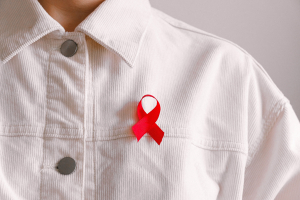
Sexually transmitted diseases (STDs) – also referred to as sexually transmitted infections (STIs) or Venereal Disease (VD), are passed on from one partner to another during sexual contact – could be vaginal, anal, or oral. Sometimes these do not present symptoms in the person carrying the microbes – asymptomatic.
STDs can also be transmitted nonsexually from the mother to the infant during breastfeeding, childbirth, and pregnancy.
STDs can also be transmitted while sharing needles or blood transfusions.
- Frequent STDs and their causes:
- Curable STDs:
- Bacteria cause gonorrhoea.
- Bacteria cause chlamydia.
- Trichomoniasis, also called “Trich,” is caused by protozoa.
- Bacteria cause syphilis and can escape detection in the beginning stages.
- Pubic Lice cause crabs/Scabies. The tiny insects feed on human blood in the genital region.
- STDs that cannot be cured but only managed:
- Herpes – caused by Virus
- HPV – caused by human papillomavirus, with the eruption of warts can lead to cervical cancer.
- HIV- is caused by Virus, which can weaken the immune system and cause other microbial infections, develop into certain cancers, and lead to AIDS.
Signs and Symptoms
Paying attention to specific symptoms and asking for medical advice will benefit women from contracting common STDs. Symptoms usually presented include,
- Unusual vaginal or anal discharge.
- Abnormal Vaginal or anal bleeding.
- Burning Sensation and pain during urination.
- Severe itch around the genitals.
- Warts in and around genitals.
- Extra growth, abnormal swelling, eruptions around genitals.
- Experiencing pain during intercourse is usually ignored. Abdominal or pelvic pain could indicate PID caused due to later phase gonorrhoea or Chlamydia.
Diagnosis
Most STDs can be diagnosed with the help of a urine or blood test, and a genital swab also helps in proper diagnosis.
Once an STD is confirmed, the Doctor will run a series of tests to determine the exact nature of the microbe(s). Even if a person is asymptomatic, tests can be advised based on the individual’s sexual habits. An asymptomatic person can also transmit the diseases to others, causing significant damage.
Treatment
When diagnosed with STD, it is vital for both partners involved to undergo treatment before commencing sexual contact, which helps prevent re-infections between the partners.
STDs caused by Bacteria / Protozoa – are treated with a combination of antibiotics based on the test results and microbes involved. The symptoms may recede in a couple of days, but it is mandatory to complete the antibiotic course. Contact your Gynaecologist if the symptoms persist or relapse even after completion of treatment.
STDs caused by viruses – cannot be cured by antibiotics. Antiviral medications can only manage STDs. Some viruses clear on their own in a couple of years. But getting diagnosed early is essential. Medications help to assuage the symptoms and prevent secondary bacterial infections and the risk of transmission. Antiviral drugs help in lowering the severity and recurrence of herpes. Vaccines are available to avoid specific HPV strains, which are the precursor for cervical cancer.
Advanced HIV antiviral treatments allow people to lead an everyday life with undetectable viral load and healthy sexual activity without the risk of developing AIDS or transmitting it to partner(s).
STDs caused by other organisms – like lice, are treated with topical creams or ointments and can be combined with oral medications depending on the severity and type of micro-organisms involved.
Prevention of STDs
- Refraining from sexual activities is the most efficient way to prevent the risk of STDs.
- Refraining from having multiple sexual partners who may risk transmission of STD.
- Using barriers like condoms or dental dams can reduce the risk of STDs transmitted by fluids but are ineffective against STDs due to skin contact.
- Vaccinations against HPV
- Abstaining from sexual activities when under the influence of intoxicants – alcohol or drugs- increases the urge to take risks.
Pre-Exposure Prophylaxis (PrEP) is a combination of medications recommended when the partner(s) have a history of STD or HIV. - Communication between partners on their history of STDs and doctors’ advice can also help prevent transmission and risk of STDs.
- Regular testing for STDs is vital if a person is sexually active with multiple partners.
STD during Pregnancy
The possibility of infections passing on to the fetus during pregnancy can be fatal.
Testing is recommended in pregnant women to identify the presence of any infection and provide appropriate treatment, thereby preventing the risk to infants. Under extreme conditions, a cesarean section can lower the risk during childbirth.
Sexual Assault and STD
In unfortunate sexual assaults, should conduct a proper evaluation for possible STDs risk and take preventive measures. Based on the medical history and other risk factors, appropriate medications and follow-up are essential to eliminate STDs and other complications.
Conclusion
With some STDs being curable and some managed, getting an early diagnosis and treatment is essential at the earliest. One infection can increase the risk of contracting a secondary disease, and untreated STDs can cause severe complications and life-threatening situations.
Proper medications, following the Doctor’s advice, and changing sexual lifestyle can go a long way to prevent, treat, or manage STDs without the risk of contracting one or transmitting to others.
Safety First, Activities Next.
Reference link: https://medlineplus.gov/sexuallytransmitteddiseases.html



